At least nine dead as powerful earthquake triggers massive landslide and blackouts in northern Japan
At least nine people have been killed after a powerful earthquake rocked Japan’s northern-most main island of Hokkaido, triggering landslides that crushed homes and knocking out power.
A further 366 were injured, at least five seriously, and around 30 people remain unaccounted for.
The magnitude 6.7 earthquake struck southern Hokkaido at 3.08am local time at the depth of 24 miles, according to Japan’s Meteorological Agency, in the same week the deadly Typhoon Jebi hit the country.
The epicentre was east of the city of Tomakomai, but the quake buckled roads and damaged homes in Hokkaido’s prefectural capital of Sapporo, with a population of 1.9 million.
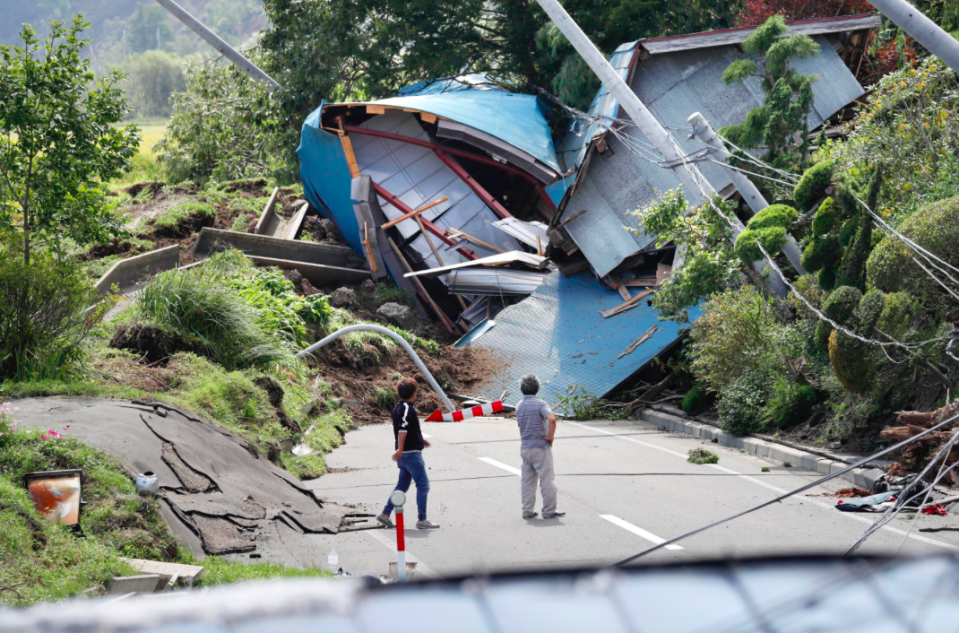
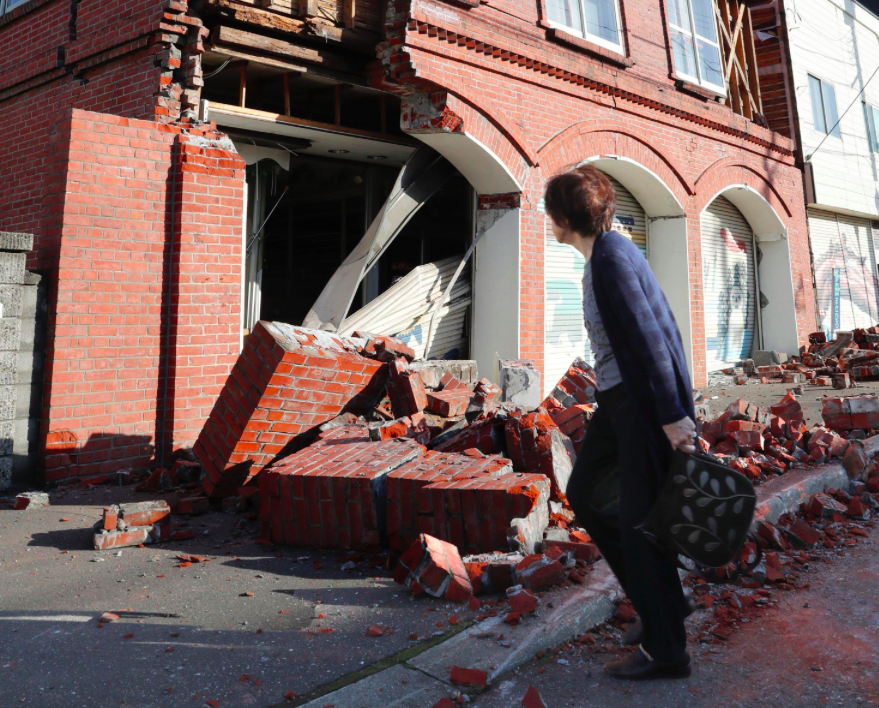
Chief Cabinet Secretary Yoshihide Suga told a news conference earlier that two people had been confirmed dead but this number has since risen to nine.
READ MORE ON YAHOO NEWS UK:
BBC presenter Rachael Bland dies at 40 after cancer battle
Two Salisbury Novichock attack suspects are Russian spies, Theresa May says
Man, 66, has his wallet stolen as he’s dying from heart attack
Donald Trump hits out at ‘fraud’ tell-all book written by Watergate reporter
Japan typhoon: At least 11 dead and 600 injured after worst storm in 25 years
Several people were reported missing in the nearby town of Atsuma, where a massive landslide engulfed homes in an avalanche of soil, rocks and timber.
Reconstruction Minister Jiro Akama told reporters that five people were believed to be buried in the town’s Yoshino district.
Some of the 40 people stranded there were airlifted to safer grounds, NHK said.
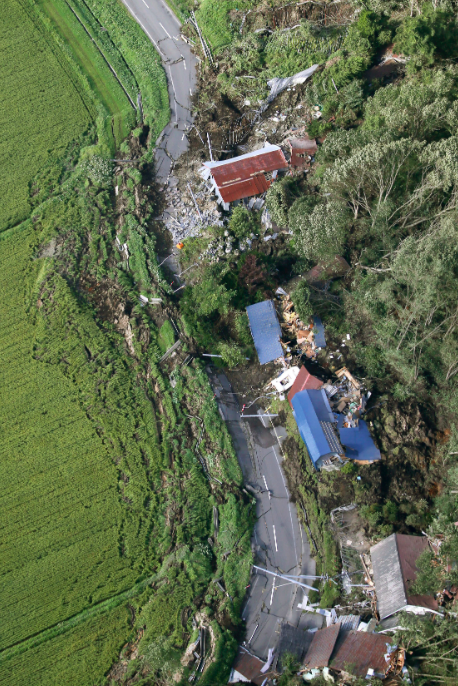
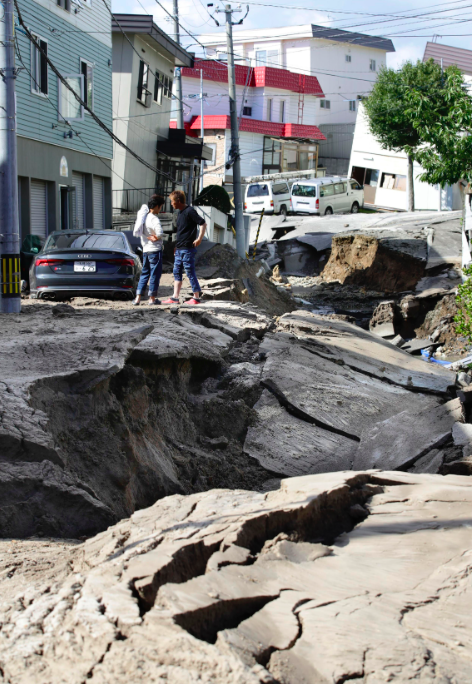
Aerial views showed dozens of landslides in the surrounding area, with practically every mountainside a raw slash of brown amid deep green forest.
Airports and many roads on the island were closed following the early morning quake.
NHK showed workers rushing to clean up shattered glass and reinstall ceiling panels that had tumbled down in the region’s biggest airport at Chitose.
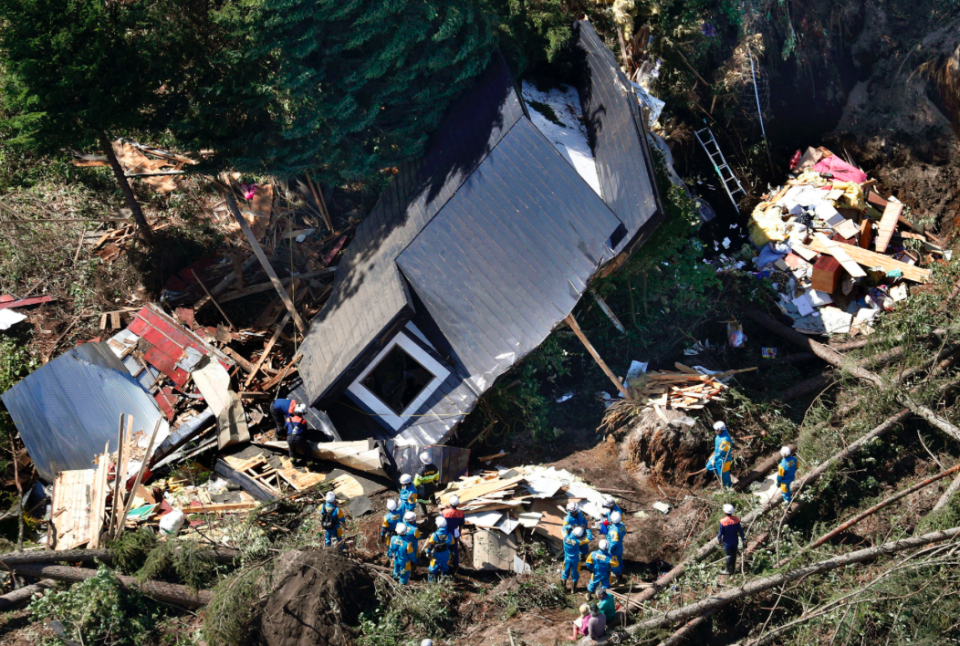
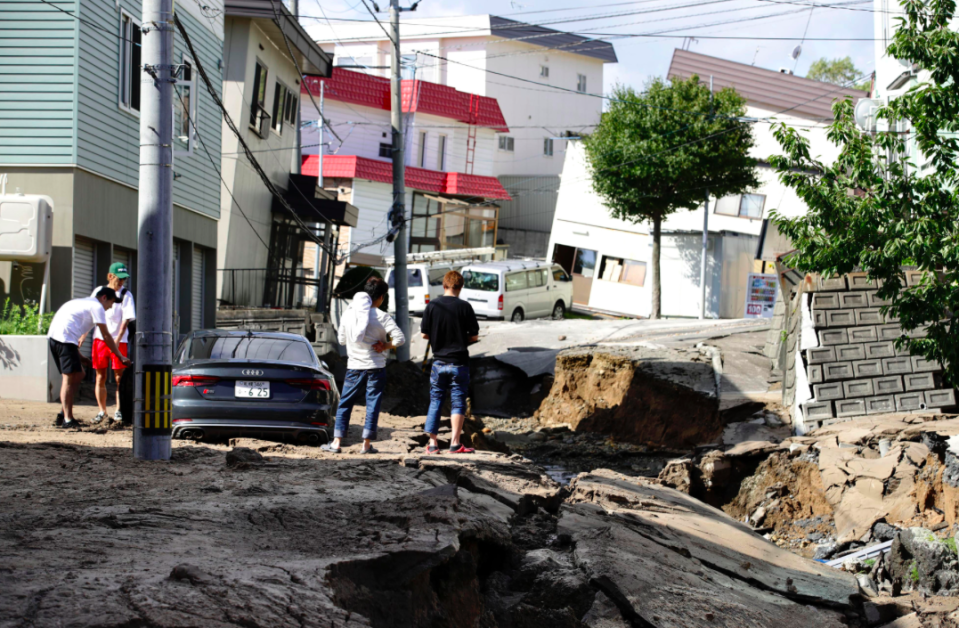
Prime Minister Shinzo Abe said that 25,000 troops and other personnel would be dispatched to the area to help with rescue operations.
In Sapporo, a mudslide on a road left several cars half buried, while power was knocked out for Hokkaido’s 2.9 million households.
Economy, Trade and Industry Minister Hiroshige Seko told reporters that the extensive power outage was caused by an emergency shutdown of the main thermal power plant at Tomato Atsuma that supplies half of Hokkaido’s electricity.
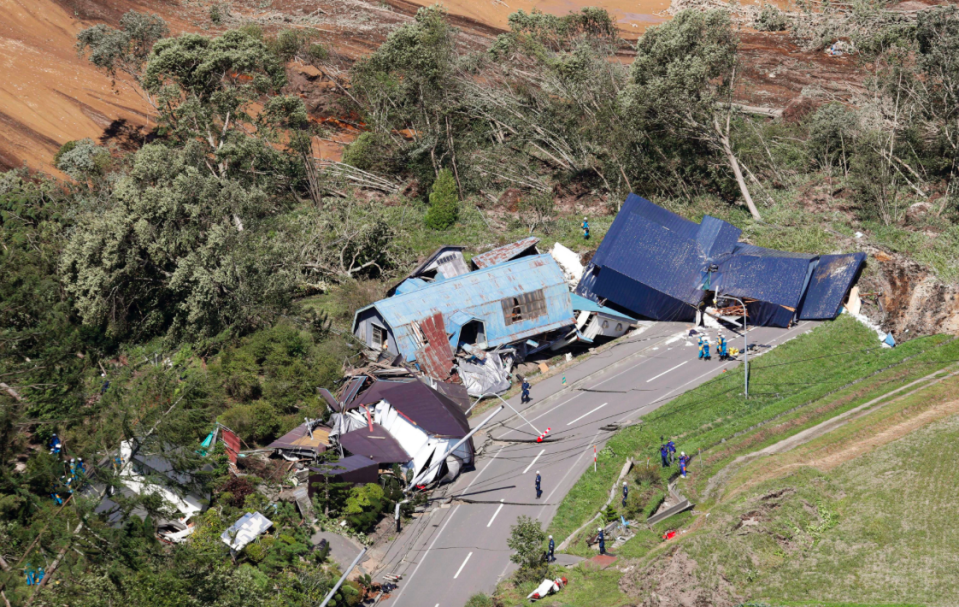
The hope had been to get power back up ‘within a few hours,’ Mr Seko said.
However, damage to three generators at the Tomato Atsuma plant meant that the restoration of power could take more than a week.
Mr Seko said utilities were planning to start up several other thermal and hydroelectric plants to provide at least some power.

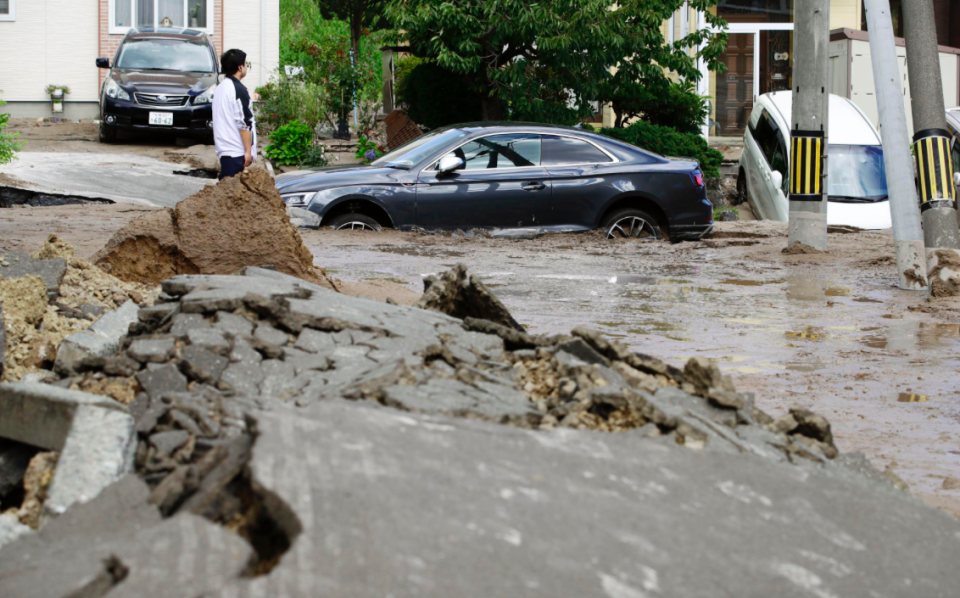
In the meantime, authorities sent power-generator vehicles to hospitals so enable them to treat emergency patients, he said.
Reacting quickly to the disaster, troops deployed water tanker trucks in Sapporo, where residents were collecting bottles to tide them over until electricity and tap water supplies come back online.
In the town of Biei, residents lined up outside of supermarkets and convenience stores, quickly clearing shelves of water, toilet paper and food.
Mika Takeda, who lives in the town of 10,000, said: ‘Only a few cartons of instant ramen were left.’
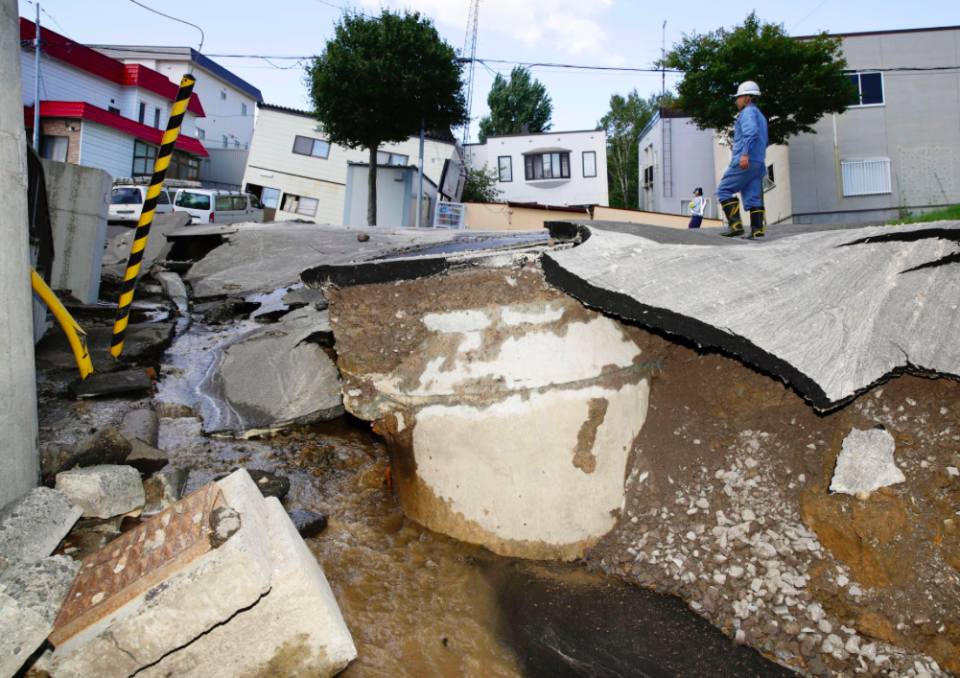
Authorities are attempting to rescue and assess damage after receiving hundreds of calls about people missing and buildings collapsing.
Three reactors at the Tomari nuclear plant were offline for routine safety checks, but they are running on backup generators that kicked in after losing external power because of the island-wide blackouts, Japan’s Nuclear Regulation Authority said.
The powerful earthquake and tsunami in March 2011 that hit northeast Japan destroyed both external and backup power to the Fukushima Dai-ichi nuclear plant, causing meltdowns.


